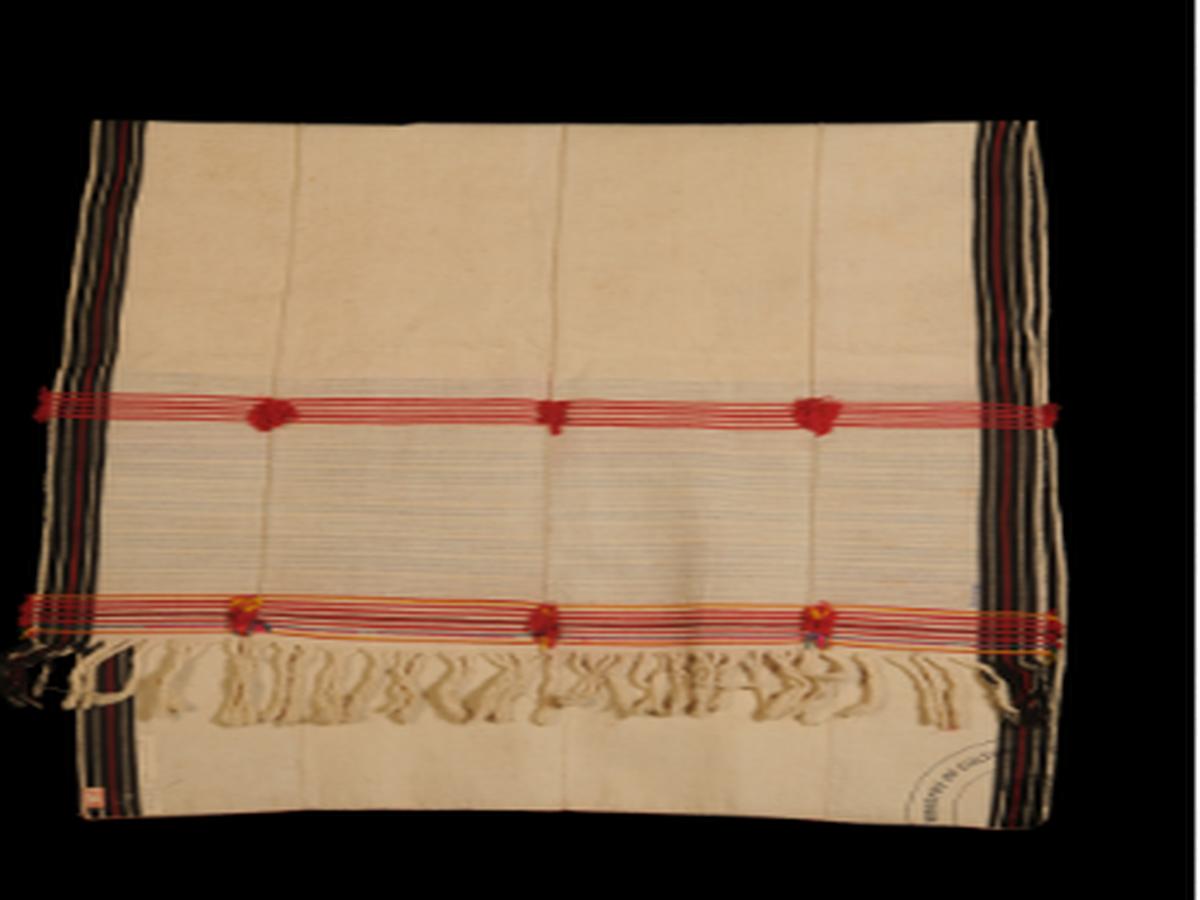State
Tribe Name
Art Type
short description
Of white cotton, this shawl of the Maram Naga tribe of Manipur in the Northeast of India is a wonderful garment steeped in culture, having borne witness to traditional workmanship and symbolic associations of the tribe. The Maram Nagas, one among numerous sub-tribes of the Naga ethnic group, boast a strong sense of identity and artistic expression, mainly through textiles. White cotton, in Maram culture, usually symbolizes purity and peace. The body of the shawl has lines of red linear design running straight across the fabric.
Thumbnail

Filter Postion
Left
Filter Background
Off
Theme
Filter Header Image

content
Image

description
Of white cotton, this shawl of the Maram Naga tribe of Manipur in the Northeast of India is a wonderful garment steeped in culture, having borne witness to traditional workmanship and symbolic associations of the tribe. The Maram Nagas, one among numerous sub-tribes of the Naga ethnic group, boast a strong sense of identity and artistic expression, mainly through textiles. White cotton, in Maram culture, usually symbolizes purity and peace. The body of the shawl has lines of red linear design running straight across the fabric.
The meaning that can be attached to these lines may be an'way-paths, continuity of life, or tribal lineage'-which are common themes in Naga textile symbolism. The extremely eye-catching feature of the shawl is the border design on both sides, bringing in contrast, color, and texture. The borders usually contain a combination of different tribal designs which may be in natural or locally dyed thread. The ends have white and black tassels with red, black, and white tassels along the sides of the shawl. These tassels serve aesthetic and cultural purposes, with the colors having some connotation with nature, spirituality, or social identity among the people. The shawl is donned during festivals, dances, and ritual assemblies, forming an important element of the Maram Naga attire and greatly emphasizing their deep-rooted connection to heritage and identity.
The meaning that can be attached to these lines may be an'way-paths, continuity of life, or tribal lineage'-which are common themes in Naga textile symbolism. The extremely eye-catching feature of the shawl is the border design on both sides, bringing in contrast, color, and texture. The borders usually contain a combination of different tribal designs which may be in natural or locally dyed thread. The ends have white and black tassels with red, black, and white tassels along the sides of the shawl. These tassels serve aesthetic and cultural purposes, with the colors having some connotation with nature, spirituality, or social identity among the people. The shawl is donned during festivals, dances, and ritual assemblies, forming an important element of the Maram Naga attire and greatly emphasizing their deep-rooted connection to heritage and identity.
Image Mode
landscape
promoted
On
Verified
Off
